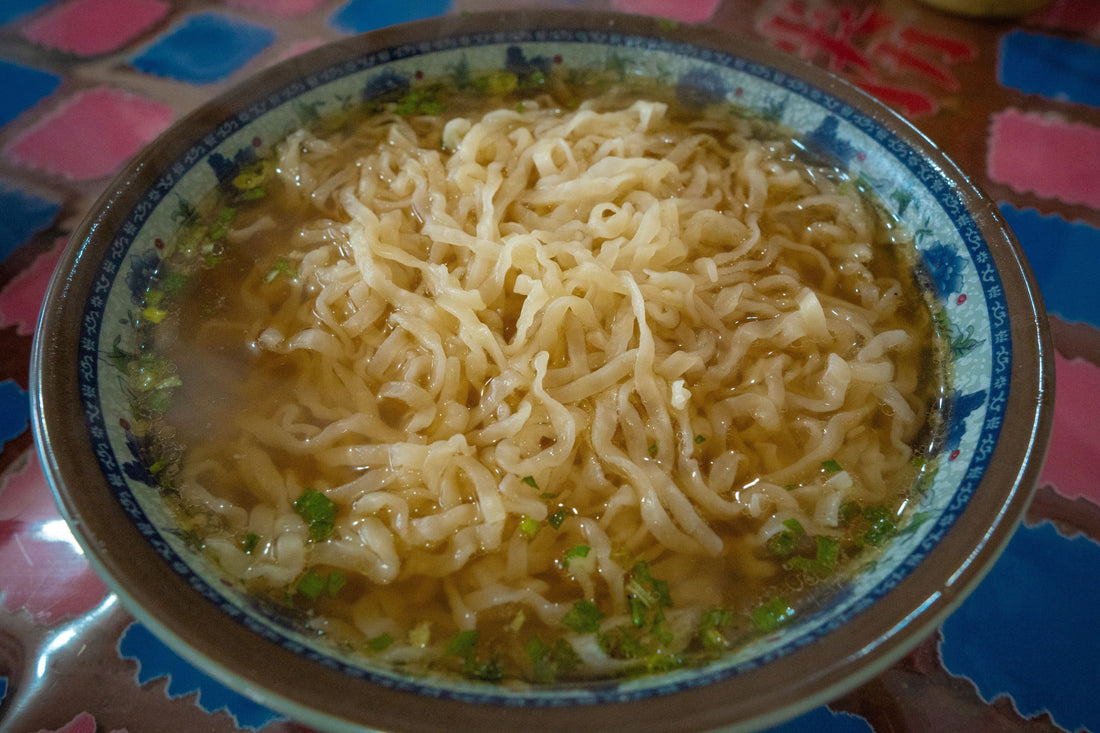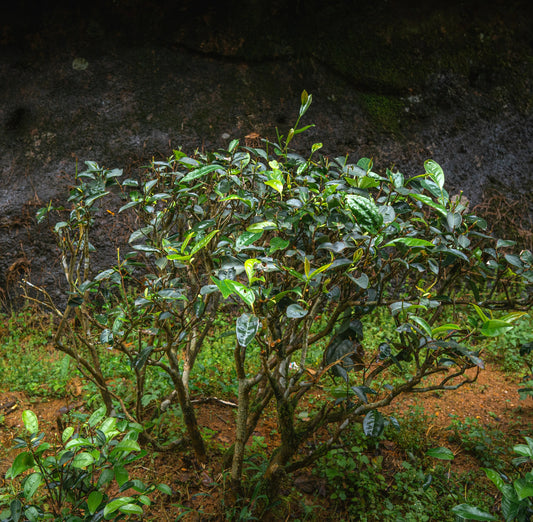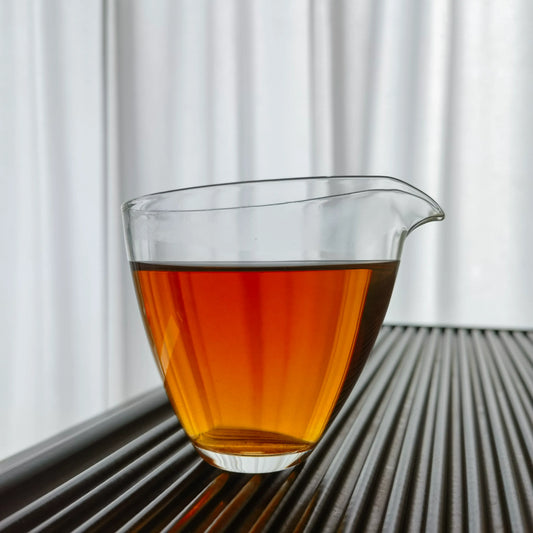
Our Fuding White Tea Trip in May
Back in mid-May, we took a short trip to Fuding to visit the Lin family. It was a really lovely time, even though it was quick. Now I finally have a moment to write a bit about that trip.
The early evening cityscape of Fuding
The Lin family's tea farm is located in Panxi Town, Fuding City. It takes about 40 minutes to drive there from downtown Fuding. The road winds through several mountain passes, while the elevation isn’t too high (around 500-800 meters), the path is pretty rough and twisty.

Along the way, we reached a flat hilltop with local tea farms spreading out on both sides of the road
Since we visited in mid-to-late May, most of the spring harvest for white tea had already been completed. The only process still underway was the sun-withering of some Spring Shou Mei white tea. It was a bit too late for the full spring picking experience, so we’ve already made plans to return next spring to witness and take part in Fuding’s spring tea harvest!

Lin in his family white tea farm

White tea farm of Lin family
There's a fascinating practice in Fuding's tea farms: every few years, right after the spring harvest, farmers cut half their tea bushes down. It might seem extreme, but this actually stimulates stronger growth the following spring. The regenerated bushes produce more abundant and plumper buds. If they skip this pruning, the plants gradually yield less each year, and the buds grow noticeably smaller.

The white tea bushes that were cut down
As mentioned earlier, regarding the production of spring tea, we only got to see the final stage: the sun-withering process of the last batch of Spring Shou Mei white tea.

Spring Shou Mei white tea leaves
You might think that sun-withering requires the strongest sunlight possible, but in reality, gentle sunlight is more important than intense rays. The ideal time for this process is actually between 8–10 AM or 3–5 PM, when the sunlight is bright yet soft.
Harsh ultraviolet rays and high temperatures can easily scorch the delicate edges of the leaves, damaging both chlorophyll and aromatic compounds. This causes the tea leaves to lose moisture too quickly and prevents proper internal transformation. As a result, the finished tea can easily carry a raw, astringent taste and lose much of its fresh, vibrant character.

Endless Spring Shou Mei white tea
Additionally, the leaves need to be turned regularly to make sure every one gets evenly exposed to the sunlight. This helps prevent some leaves from drying too fast, keeping the whole batch consistent.

Turning over the Shou Mei white tea leaves

Katniss was trying to help!
The Lin family's warehouse holds a huge amount of white tea. To protect it from moisture, they place backing board on the floor, creating a barrier that prevents ground humidity from reaching the tea.

Backing board on the floor

Lin and his white tea storage
We were lucky to get a taste of the Lin family's 2019 Silver Needle white tea. The grassy taste of fresh tea has faded with age. The tea soup is thick and smooth, and when it hits my tongue, a blend of creamy and nutty notes fills my mouth.

2019 Silver Needle White Tea
The local food is just as memorable. If you ever get the chance to visit Panxi in Fuding, I highly recommend trying their handmade Panxi-style noodles. They have a uniquely chewy yet crisp texture, unlike any other noodles, and they're served in a rich, savory broth that tastes deeply of slow-cooked bone stock.

Handmade Panxi-style noodles
What makes them special is how they’re made: the dough is pressed for hours with a bamboo pole, then left to ferment for several more before shaping. The broth, on the other hand, is simmered patiently with pork bones. Absolutely worth a try!

Owner of the restaurant cooking noodles
Our Fuding trip was so wonderful that we’re already planning a return this October! This time to look for some well-aged white tea. As you probably know, it’s the perfect kind of tea to enjoy during the winter months. Stay tuned, we’ll have lots more to share!





